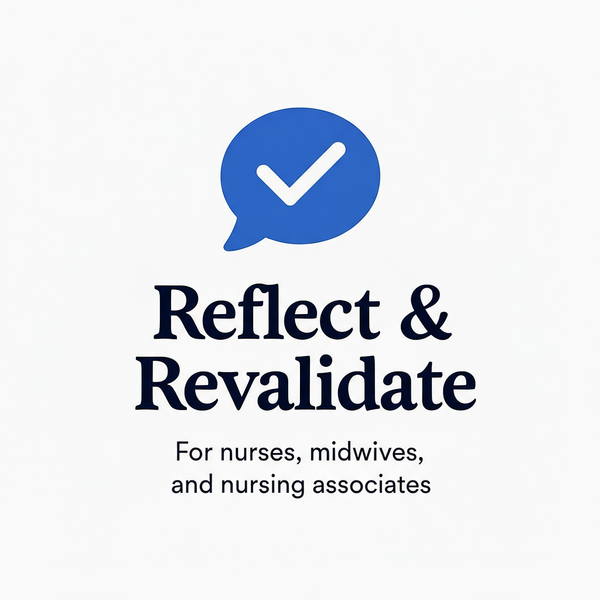Reflection: De-escalating an Aggressive Patient
Share
Submitted by: Tom - Mental Health Nurse with 5 years experience
What was the nature of the CPD activity and what did you hope to learn from it?
I was working on an acute mental health ward when James (pseudonym), a 32-year-old man experiencing a psychotic episode, became increasingly agitated in the communal area. He was pacing, raising his voice, and accusing other patients of 'plotting against him.' His body language was tense, and I could see the situation was escalating.
Other patients were becoming anxious, and a newer member of staff looked uncertain about how to respond. I needed to de-escalate the situation quickly to maintain safety for James, other patients, and staff, while preserving James's dignity and avoiding the use of restraint if possible.
Through this experience, I hoped to develop my de-escalation skills, learn to manage my own anxiety in challenging situations, and understand how to balance safety with therapeutic, person-centred care.
What did you learn from the CPD activity?
I learned that the first step in de-escalation is managing my own emotional response. I took a breath, remained calm, and approached James in a non-threatening way—maintaining a safe distance, keeping my body language open, and speaking in a low, steady voice. My calmness helped prevent the situation from escalating further.
I learned the importance of validation and empathy, even when someone's beliefs aren't based in reality. Rather than challenging James's belief that people were plotting against him, I acknowledged his distress: 'I can see you're really worried, James. That must feel frightening.' This helped him feel heard rather than dismissed.
I also learned the value of offering choices and control. I suggested we move to a quieter area where we could talk privately, giving James agency in the situation. This simple offer of choice helped him feel less trapped and more in control, which reduced his agitation.
The experience taught me to involve the person in problem-solving. I asked James what would help him feel safer right now, and he said he wanted to go to his room. By respecting his request and walking with him calmly, we avoided the need for any restrictive intervention.
How did you change or improve my practice as a result?
I now pay much closer attention to early warning signs of agitation—changes in body language, tone of voice, or behaviour patterns. By intervening early, before a situation fully escalates, I can often prevent aggressive incidents altogether.
I've improved my communication approach with distressed patients. I now consciously lower my voice, slow my speech, and use simple, clear language. I've learned that matching someone's agitated energy with my own urgency only makes things worse.
I've also become more confident in my ability to manage challenging situations without immediately calling for backup. While safety is paramount, I've learned that a calm, skilled response from one person is often more effective than multiple staff members rushing in, which can feel overwhelming and threatening to the patient.
Following this incident, I completed additional training in de-escalation techniques and trauma-informed care. I now understand that aggression is often a response to fear, past trauma, or feeling out of control, rather than deliberate violence. This perspective has made me more compassionate and effective in my responses.
How is this relevant to the Code?
This reflection demonstrates several aspects of the NMC Code:
Treat people with kindness and respect (1.1): I maintained James's dignity throughout the incident, treating him with compassion rather than as a problem to be managed.
Preserve safety (13): I took appropriate action to manage a situation that posed a risk to James, other patients, and staff, while using the least restrictive approach possible.
Practise effectively (6.1): I used my communication skills and knowledge of de-escalation techniques to manage a challenging situation therapeutically.
Work in partnership (2.5): I involved James in decision-making about how to manage his distress, respecting his autonomy even during a crisis.
Promote professionalism and trust (20.1): I acted as a role model for the newer staff member, demonstrating professional, calm, and compassionate care under pressure.
Do you have any further comments?
After the incident, I debriefed with James once he was calmer. He thanked me for 'not treating him like a criminal' and said he appreciated that I listened to him. This conversation reinforced for me that even in crisis situations, therapeutic relationships and person-centred care remain possible and important.
I also debriefed with the newer staff member, discussing what happened and why I responded the way I did. Sharing knowledge and supporting colleagues is an important part of maintaining a safe, skilled workforce in mental health settings.
This experience has strengthened my belief that de-escalation is a core nursing skill, not just for mental health settings but across all areas of healthcare. I'm now passionate about promoting trauma-informed approaches and reducing the use of restrictive interventions in mental health care.
